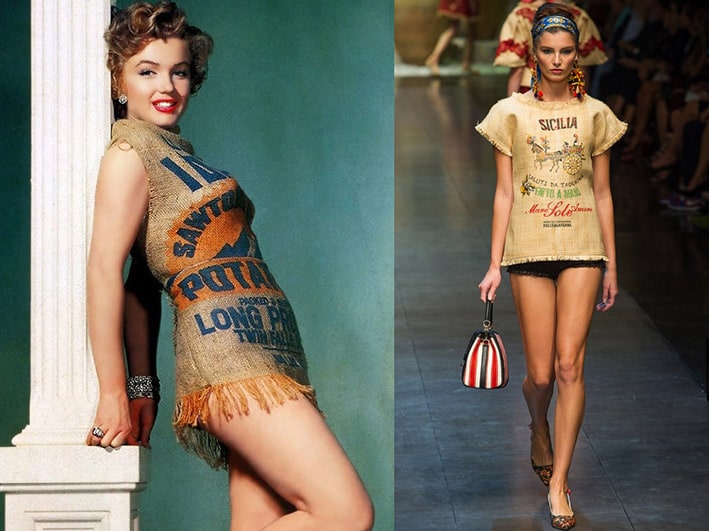The year was 1920, a period of economic prosperity in the US. Production worked intensively to supply countries that were recovering from the first world war.
High share price and the possibility of easy profit, were the target of new investors, including people with common income.
Some even invested their entire savings and even mortgaged real estate, that is, they paid their loans with stock profits.
As Warren Buffet would say “Never test the depth of a river with both feet”.
Soon, in 1929, the amount of goods and services produced in the country fell by a third and the unemployment rate soared to 25%. The stock market lost more than 80% of its value and nearly 7,000 banks failed, causing a drain on household bank accounts and starting an unprecedented economic crisis known as the Great Depression.
- UPCYCLING – THE NEW FASHION CONCEPT
The current concept of “upcycling“, was one of the few alternatives existing in this period to get clothes. Since food was the priority, everything else was just luxury.
The crise, makes housewives to get clothes for the whole family, as well as other textile items, from feed sacks, made of cotton.

- REALIZED OPORTUNITIES
During the Great Depression, attentive flour producers observed the change in market behavior.
They started to offer the product with some improvements in the packaging, which could contribute to the new application, such as prints, labels and descriptions with removable ink and even reuse tips.
In 1952, the country’s economy was already recovering and the feed Sacks were no longer reused. However, actress Marilyn Monroe, in response to some criticism, was keen to prove that she could be beautiful and sexy even dressed in a sack of potatoes.
After that, the product that was born out of a need, was adopted by the fashion industry and sold to men, women and children at the time, and recently inspired the brand Dolce & Gabbana in the Spring/Summer 2013 collection.
Written by Talia Corradi Pereira, Export, Censi Máquinas
Source:
Federal Reserve Bank of St. Louis, www.stlouisfed.org/education
Textile Research Centre, www.trc-leiden.nl/trc/images/stories/pdf/trc_leidenfeedsack_exhibition_proposal.pdf





